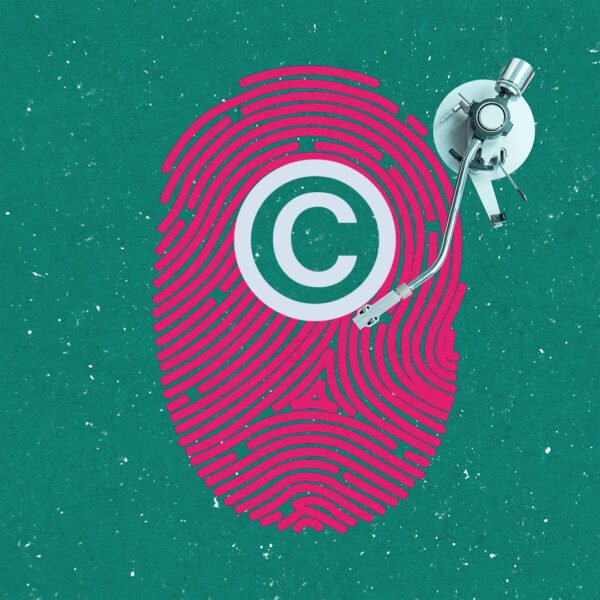
Becoming a novelist is a dream for many, but the financial realities of this career path can often be stark. While the image of a writer enjoying a comfortable life from book sales is appealing,
Becoming a novelist is a dream for many, but the financial realities of this career path can often be stark. While the image of a writer enjoying a comfortable life from book sales is appealing, the truth is that making a living as a novelist involves navigating a complex landscape. The income of writers varies widely, with only a small percentage earning enough to support themselves solely through their writing. Understanding these financial realities is crucial for anyone aspiring to be a novelist, as it can help set realistic expectations and guide career decisions.
The world of publishing offers two primary routes: traditional publishing and self-publishing. Traditional publishing, involving established publishing houses, can provide advances and widespread distribution but is highly competitive. On the other hand, self-publishing offers more control and higher royalty rates but requires authors to bear the upfront costs and manage their marketing. Each path comes with its own set of challenges and opportunities, and the choice between them can significantly impact an author’s financial success.
By exploring the different income streams and financial challenges faced by novelists, we can gain a clearer picture of what it takes to make a living from writing. This understanding is essential for those considering a career in creative writing and seeking to navigate the publishing industry effectively.
How do Novelists Make a Living? Financial Realities of Being a Novelist
Traditional Publishing
Traditional publishing remains a popular route for many aspiring authors, offering the prestige and support of established publishing houses. The process typically begins with securing a literary agent who helps the author polish their manuscript and pitch it to publishers. If a publishing house is interested, they offer a contract, and the manuscript goes through a rigorous editing process before publication. Traditionally published writers benefit from professional editorial services, design, marketing, and distribution, which can significantly boost a book’s visibility and sales.
Advances and Royalties
One of the primary financial incentives in traditional publishing is the advance—a lump sum paid to the author before the book is published. Advances can vary widely, ranging from a few thousand dollars to six or even seven figures, depending on the publisher’s confidence in the book’s potential success and the author’s marketability. This advance is an advance against future royalties, meaning the author won’t receive additional royalties until the advance has been “earned out” through book sales.
Royalties, the percentage of the book’s sales that the author receives, are another critical component of the traditional publishing financial model. Typically, authors receive royalties ranging from 8% to 15% of the book’s cover price for physical copies and around 25% for e-books. These rates can fluctuate based on the author’s negotiation power and the publisher’s standard practices. While advances provide an upfront financial cushion, royalties offer a long-term income stream, albeit one that depends on the book’s ongoing sales performance.
Long-term Income Potential
For many traditionally published authors, the long-term income potential hinges on several factors: the book’s popularity, marketing efforts, and the author’s ability to continue producing new work. Authors with multiple books, particularly those who build a loyal readership or achieve bestseller status, have a better chance of earning a sustainable income from their writing. However, the publishing industry’s competitive nature means that even well-written books can struggle to find a market, making long-term financial success uncertain for many.
Established authors often diversify their income streams to maintain financial stability. They may engage in speaking engagements, teaching, and freelance writing, supplementing their book income. Additionally, successful authors often negotiate better terms for future books, securing higher advances and royalties, which can significantly enhance their long-term earnings.
Your Publishing Journey Awaits – Start NowCase Studies of Established Authors
Examining the careers of established authors provides valuable insights into the financial realities of traditional publishing. Take J.K. Rowling, for example, whose “Harry Potter” series transformed her from a struggling single mother into one of the wealthiest women in the world. Rowling’s success story underscores the potential for extraordinary financial gain in traditional publishing, though it also highlights how rare such success can be.
Another notable example is Stephen King, who has consistently published bestsellers over several decades. King’s prolific output and loyal readership have ensured a steady stream of income, bolstered by movie adaptations and foreign rights sales. King’s experience demonstrates how a combination of talent, productivity, and marketability can lead to sustained financial success.
In contrast, midlist authors—those whose books sell modestly but do not become bestsellers—often face different financial realities. These authors might receive modest advances and earn a steady, if not spectacular, income from their writing. For instance, an author like Neil Gaiman, known for works like “American Gods” and “Good Omens,” has successfully balanced commercial success with critical acclaim, securing a reliable income through a mix of novels, short stories, and screenwriting.
In conclusion, traditional publishing offers a structured pathway with the potential for significant financial rewards. However, the journey is fraught with uncertainties, and long-term financial stability often depends on an author’s ability to consistently produce marketable work and diversify their income streams. Understanding these dynamics is essential for aspiring traditionally published authors as they navigate the publishing industry.
Self-Publishing for Self Published Authors
Self-publishing has emerged as a viable alternative to traditional publishing, offering authors more control over their work and potentially higher earnings per book sold. The process begins with the author completing their manuscript and then taking on roles typically handled by a publishing house, such as editing, cover design, formatting, and marketing. Platforms like Amazon Kindle Direct Publishing (KDP), Smashwords, and IngramSpark have made it easier for authors to publish their books in both digital and print formats.
Spines, a leading self-publishing platform, streamlines this process to ensure a quick and efficient journey from manuscript to published book. With Spines, you can transition from manuscript to publication in less than 30 days, thanks to their streamlined process. Their comprehensive plans are budget-friendly, leveraging AI-driven cost efficiency to keep production costs significantly lower than industry standards.
Spines offers dedicated support, providing each author with a personal production manager to guide them through every step. They handle all formats, including Print-on-Demand (POD), eBooks, and Audiobooks, ensuring your book reaches a wide audience. Your book will be distributed across 100+ global channels, including top retailers like Amazon and Barnes & Noble.
The platform is designed with user-friendliness in mind, featuring a dashboard that simplifies the publishing process, regardless of your tech experience. Spines also includes proofreading and editing, formatting, cover design, and more in their services. They are open to all authors, whether you’re just starting out or are an established author.
Costs Involved
While self-publishing offers greater control and higher royalties, it also requires authors to invest in various aspects of the publishing process. Key costs include:
- Cover Design: A professionally designed cover can significantly impact a book’s marketability. Prices for cover design can range from $100 to $500 or more, depending on the designer’s expertise and the complexity of the design.
- Editing: Quality editing is crucial for a professional final product. Costs for editing services (developmental editing, copyediting, and proofreading) can vary widely, often ranging from $500 to several thousand dollars based on the manuscript’s length and the level of editing required.
- Marketing: Effective marketing is essential to reach potential readers. Authors might invest in paid advertising, social media campaigns, book tours, and promotional services, with costs varying based on the chosen strategies and platforms.
Income Streams
Self-published authors earn money primarily through book sales, both in print and digital formats. E-books, in particular, have become a significant revenue source due to their low production costs and high profit margins. Platforms like Amazon KDP offer royalties of up to 70% on e-book sales, compared to the 8-15% typically offered by traditional publishers for print books.
In addition to e-book sales, self-published authors can also earn from:
- Print Books: Print-on-demand services allow authors to sell physical copies without the need for large print runs, reducing upfront costs and financial risk.
- Audiobooks: With the growing popularity of audiobooks, platforms like Audible and Findaway Voices enable authors to reach a wider audience and generate additional income.
- Merchandising and Foreign Rights: Successful self-published books can lead to opportunities for merchandising and selling foreign rights, further enhancing an author’s income.
Mixed Publishing Models and Other Income Sources
Combining Traditional and Self-Publishing
Many authors today are exploring hybrid or mixed publishing models to maximize their book income. This approach combines the strengths of both traditional and self-publishing. For example, an author might traditionally publish some works to benefit from the publisher’s marketing and distribution networks while self-publishing others to retain control and earn higher royalties. This strategy allows authors to build a diverse portfolio of work, catering to different markets and readerships.
A hybrid approach also enables authors to leverage the credibility and audience base gained from traditional publishing to boost the visibility and sales of their self-published books. By combining these models, authors can create a more resilient and diversified income stream, reducing reliance on a single source of book income.
Income from Speaking Engagements, Teaching, and Other Avenues
Beyond book sales, many authors supplement their income through speaking engagements and teaching. Established authors often receive invitations to speak at conferences, literary festivals, and corporate events, where they can share their expertise and insights. These engagements can be lucrative, with fees varying widely based on the author’s prominence and the event’s scale.
Teaching is another valuable income source. Many authors teach creative writing courses, either through universities, writing workshops, or online platforms. This not only provides a steady income but also helps authors build their brand and connect with aspiring writers.
Additionally, some authors create supplementary materials like writing guides, online courses, or subscription-based content, generating further income while engaging their audience in new ways.
Selling Foreign Rights and Film Options
Foreign rights sales offer another significant income stream for authors. Selling the rights to publish a book in other countries can open up new markets and generate substantial royalties. Publishers and literary agents often negotiate these deals, which can include translations and adaptations to fit different cultural contexts.
Film and television options present another lucrative opportunity. If a book’s story has strong visual appeal or a compelling narrative, production companies may purchase the rights to adapt it into a film or TV series. While not all options lead to actual productions, the initial payment for the option can be substantial, and successful adaptations can bring in considerable royalties and residuals.
Conclusion
By combining traditional and self-publishing, leveraging speaking engagements, teaching, and other avenues, and exploring foreign rights and film options, authors can create a multifaceted income strategy. This approach not only increases financial stability but also allows authors to expand their reach and impact within the literary and entertainment industries.

Survey Data and Statistics
Understanding the financial realities faced by novelists requires examining data from various industry surveys. These surveys, conducted by organizations such as the Authors Guild and other industry bodies, provide valuable insights into the income distribution and economic challenges within the publishing industry.
Authors Guild Survey
The Authors Guild, a prominent organization advocating for writers’ rights, regularly conducts surveys to assess the financial health of authors. Their surveys reveal a sobering picture of the economic landscape for writers. According to the most recent Authors Guild survey, the median income for full-time writers in 2020 was just $20,300, a significant decrease from previous years. For part-time writers, the median income was even lower, at around $6,080. These figures highlight the economic challenges faced by many authors, especially when considering the cost of living in most regions.
The survey also showed a substantial income disparity between traditionally published and self-published authors. Traditionally published authors reported a median income of $12,400, while self-published authors had a slightly higher median income of $16,800. This suggests that while self-publishing can offer higher immediate returns for some, the overall financial struggle remains a common theme across the board.
Your Publishing Journey Awaits – Start NowOther Industry Surveys
Other industry surveys corroborate the findings of the Authors Guild, providing additional context and details. For instance, a survey conducted by the UK-based Authors’ Licensing and Collecting Society (ALCS) found that the median annual income of professional authors was £10,500, significantly below the national average income. This survey also highlighted that only a small fraction of authors—approximately 10%—earned a living solely from their writing.
The Digital Book World and Writer’s Digest surveys also offer insights into authors’ earnings, particularly in the self-publishing sector. These surveys reveal that while a few self-published authors achieve substantial financial success, the majority earn modest incomes. According to these surveys, about 50% of self-published authors make less than $500 annually from their book sales, underscoring the difficulties of achieving financial stability through self-publishing alone.
Income Data from Different Surveys
A deeper dive into the income data from various surveys highlights several key trends and patterns:
1. Income Distribution: Across all surveys, there is a wide disparity in income distribution among authors. A small percentage of writers earn significant incomes, while the overwhelming majority earn much less. This skewed distribution suggests that financial success in writing is highly concentrated among a few top earners.
2. Genre Impact: Different genres show varying income levels. For instance, authors writing in popular genres like romance, science fiction, and thriller often report higher earnings compared to those writing in less commercial genres like literary fiction or poetry. This indicates that market demand plays a crucial role in an author’s financial success.
3. Multiple Income Streams: Successful authors often rely on multiple income streams. In addition to book sales, they earn from speaking engagements, teaching, and writing-related activities. Surveys consistently show that authors with diversified income sources tend to report higher overall earnings.
4. Effect of Digital Publishing: The rise of e-books and digital platforms has created new opportunities and challenges. While digital publishing lowers barriers to entry and allows authors to reach global audiences, it also increases competition. The income from e-books varies widely, with a few authors earning substantial royalties, while many others struggle to gain visibility and sales.
5. Impact of Marketing and Promotion: Authors who actively engage in marketing and promotion tend to earn higher incomes. Surveys highlight the importance of building an author platform, using social media, and investing in marketing efforts to boost book sales and overall income.
Conclusion
The analysis of surveys from the Authors Guild and other industry organizations paints a comprehensive picture of the financial landscape for novelists. While a few authors achieve notable financial success, the majority face significant economic challenges. Understanding these trends is crucial for aspiring and established authors alike, as it helps set realistic expectations and informs strategic decisions regarding publishing paths and income diversification. By leveraging the data from these surveys, authors can better navigate the complexities of the publishing industry and work towards achieving sustainable financial success.
Income Distribution Among Novelists
The income distribution among novelists is highly uneven, with a stark contrast between the earnings of a small percentage of high-earning authors and the overwhelming majority who earn much less. For many writers, the financial struggles are significant, with a majority earning less than $1,000 a year. According to data from various surveys, a significant portion of novelists struggle to make a living solely from their writing. For instance, the Authors Guild survey reveals that the median income for full-time writers is just above the poverty level, with many earning well below the minimum wage.
The distribution of income levels shows that only a small fraction of authors achieve substantial financial success. Most writers earn modest amounts, with many reporting incomes that are insufficient to cover basic living expenses. The median income for full-time writers, as previously noted, is around $20,300 annually. In comparison, part-time writers fare even worse, with median earnings of approximately $6,080. These figures underscore the economic challenges faced by the vast majority of novelists.
Comparison of Income Between Traditionally Published and Self-Published Authors
The financial outcomes for traditionally published and self-published authors vary significantly, influenced by factors such as advance payments, royalty rates, and marketing efforts. Traditionally published authors typically receive an advance against royalties, which can provide a short-term financial boost. However, once the advance is earned out, ongoing income relies on book sales and royalties, which can be unpredictable.
For traditionally published authors, the median income is reported to be around $12,400. This figure includes earnings from book advances and royalties, reflecting the competitive and often uncertain nature of the traditional publishing market. While some traditionally published authors secure lucrative advances and achieve bestseller status, the majority receive modest advances and face challenges in earning substantial royalties.
In contrast, self-published authors have the potential to earn higher royalties per book sold but must bear the upfront costs of publishing and marketing. The median income for self-published authors is slightly higher at approximately $16,800. This income includes sales from both print and digital formats, with e-books often providing a significant portion of earnings due to their lower production costs and higher royalty rates.
Despite the higher median income for self-published authors, the income distribution within this group is also highly skewed. A small percentage of self-published authors achieve notable financial success, while the majority earn relatively modest amounts. Surveys indicate that about half of self-published authors make less than $500 annually from their book sales, highlighting the difficulties of achieving financial stability through self-publishing alone.
Conclusion
The income distribution among novelists reveals a challenging financial landscape, with most writers earning modest incomes that often fall below the poverty level. While traditionally published authors benefit from advances and professional support, their median income remains low. Self-published authors, despite having higher potential earnings per book, face significant upfront costs and marketing challenges. Understanding these income disparities is crucial for aspiring novelists as they navigate their career paths and make informed decisions about their publishing strategies.
Factors Affecting Income
How Genre Affects Income
The genre in which a novelist writes can significantly impact their potential income. Certain genres tend to be more lucrative than others, driven by reader demand and market trends. For example, popular genres such as romance, science fiction, and thriller often generate higher sales volumes, which can translate to greater earnings for authors. These genres typically have large, dedicated readerships who frequently seek new content, allowing authors to build a substantial fan base and achieve consistent sales.
In contrast, genres like literary fiction and poetry, while critically acclaimed, generally attract smaller, niche audiences. As a result, authors writing in these genres may face greater challenges in achieving significant sales and earning a sustainable income. Non-fiction authors also experience varied financial outcomes, depending on the subject matter’s popularity and the author’s expertise. Topics with broad appeal, such as self-help, business, and memoirs, tend to perform well in the market, potentially leading to higher earnings.
Your Publishing Journey Awaits – Start NowImpact of Having Multiple Books Published
The number of books an author has published can greatly influence their income. Authors with multiple books tend to have a more robust income stream due to several factors. Firstly, a larger catalog increases visibility and credibility, attracting more readers and encouraging higher sales across all titles. When a reader enjoys one book, they are often likely to purchase additional works by the same author, creating a compounding effect on sales.
Moreover, having multiple books allows authors to leverage their backlist titles. Even older books can continue to generate income through consistent sales and promotions. Authors who release new books regularly can maintain reader interest and engagement, further boosting their overall earnings. This approach is particularly effective in genres with avid readers, such as romance and science fiction, where fans eagerly anticipate new releases.
Additionally, authors with a larger body of work have more opportunities to explore diverse income streams, such as box sets, series bundles, and special editions. These offerings can attract new readers and provide added value to existing fans, enhancing overall profitability.
Conclusion
Both genre and the number of published books are critical factors affecting a novelist’s income. Writing in popular genres can lead to higher sales, while maintaining a prolific publishing schedule can create a more sustainable and diversified income stream. Aspiring authors should consider these factors when planning their writing careers to maximize their financial success in the competitive publishing industry.
Strategies for Making Money as a Novelist
No matter how good a book is, it will not succeed without effective marketing. For both self-published and traditionally published authors, marketing plays a crucial role in reaching readers and driving book sales. Traditionally published authors might receive some marketing support from their publishers, but the extent and effectiveness of this support can vary. Often, traditionally published authors need to supplement these efforts with their own marketing initiatives to maximize their book’s reach.
Self-published authors bear full responsibility for marketing their books. Without the backing of a publishing house, they must be proactive in promoting their work to ensure it stands out in a crowded market. Effective marketing not only increases book sales but also helps build an author’s brand, leading to long-term success and a loyal readership.
Strategies for Effective Promotion
1. Build an Author Platform: A strong online presence is essential for effective book marketing. Authors should create and maintain a professional website, regularly update a blog, and be active on social media platforms such as Twitter, Facebook, Instagram, and LinkedIn. Engaging with readers through these channels can help build a loyal following and generate buzz for upcoming releases. Email newsletters are another powerful tool, allowing authors to communicate directly with their audience and keep them informed about new books, events, and promotions.
2. Leverage Book Reviews: Positive reviews can significantly impact a book’s success. Authors should seek reviews from reputable sources, including book bloggers, literary magazines, and influential readers. Encouraging readers to leave reviews on platforms like Amazon and Goodreads can boost a book’s visibility and credibility. Authors can also use excerpts from positive reviews in their marketing materials to attract potential readers.
3. Participate in Book Promotions and Giveaways: Running promotional campaigns can attract new readers and generate interest in a book. Authors can offer limited-time discounts, free e-book promotions, or giveaways through platforms like BookBub, Goodreads, and Kindle Direct Publishing (KDP) Select. These promotions can help increase a book’s visibility, especially if coordinated with a larger marketing strategy.
4. Engage with the Writing Community: Networking with other authors, participating in writing groups, and attending literary events can provide valuable marketing opportunities. Collaborative marketing efforts, such as cross-promotions with other authors, can help expand an author’s reach. Additionally, joining professional organizations, such as the Authors Guild or local writers’ associations, can offer support and resources for effective marketing.
5. Utilize Paid Advertising: Investing in targeted advertising can be an effective way to reach new readers. Platforms like Amazon Ads, Facebook Ads, and Google AdWords allow authors to create tailored ad campaigns that target specific demographics and interests. Careful management of these campaigns can yield a high return on investment by increasing book sales and expanding an author’s audience.
6. Host Virtual and In-Person Events: Book launches, readings, and signings provide opportunities to connect directly with readers. Virtual events, such as webinars and live Q&A sessions on social media, can reach a global audience without the logistical challenges of in-person events. These events can generate excitement, foster a sense of community, and encourage attendees to purchase books.
7. Create High-Quality Content: Sharing valuable content related to a book’s themes or the writing process can engage readers and attract a broader audience. This can include blog posts, videos, podcasts, and social media updates that provide insights into the author’s world and the stories they create. Consistently producing high-quality content helps build an author’s brand and keeps readers interested between book releases.
By implementing these strategies, both self-published and traditionally published authors can effectively promote their books, increase visibility, and drive sales. Marketing is a continuous process that requires creativity, persistence, and adaptability to changing trends and technologies. With a well-executed marketing plan, authors can significantly enhance their ability to make a living as novelists.
Your Publishing Journey Awaits – Start NowDiversifying Income Streams
Exploring Multiple Income Avenues
For novelists, relying solely on book sales for income can be precarious. Diversifying income streams is essential for achieving financial stability and long-term success. By exploring various revenue avenues, authors can supplement their book income and mitigate the risks associated with the unpredictable nature of publishing. Here are some strategies for leveraging multiple income streams effectively:
Speaking Engagements
Authors can earn substantial fees by speaking at conferences, literary festivals, corporate events, and schools. These engagements offer opportunities to share their expertise, discuss their books, and connect with new audiences. To leverage speaking engagements:
- Develop a Portfolio: Create a portfolio showcasing past speaking experiences, topics of expertise, and testimonials. This can help attract event organizers and secure speaking opportunities.
- Engage with Organizations: Reach out to literary societies, schools, universities, and event organizers to offer speaking services. Building relationships with these organizations can lead to regular invitations and a steady stream of speaking engagements.
- Promote Availability: Use your website and social media platforms to announce your availability for speaking engagements. Highlight your areas of expertise and the unique value you can provide to audiences.
Teaching
Many authors find teaching to be a rewarding way to supplement their income. Offering writing workshops, teaching creative writing courses at universities or community centers, and conducting online classes can provide a steady income stream. To leverage teaching opportunities:
- Create Course Content: Develop comprehensive course materials that cover various aspects of writing, from storytelling techniques to publishing strategies. High-quality content will attract more students.
- Offer Online Courses: Platforms like Udemy, Skillshare, and Teachable allow authors to reach a global audience with online courses. Pre-recorded courses provide a passive income stream, while live classes offer interactive learning experiences.
- Collaborate with Institutions: Partner with schools, universities, and writing centers to offer workshops and courses. Institutional collaborations can enhance your credibility and expand your reach.
Foreign Rights
Selling foreign rights allows authors to reach new markets and earn royalties from translations. To leverage foreign rights sales:
- Work with Agents: Literary agents specializing in foreign rights can help negotiate deals and navigate the complexities of international publishing. Agents have established networks and can secure favorable terms for authors.
- Attend International Book Fairs: Participating in events like the Frankfurt Book Fair or the London Book Fair provides opportunities to meet foreign publishers and showcase your work. These fairs are prime venues for negotiating foreign rights deals.
- Create Translatable Content: Write books with universal themes and appeal that can resonate with international audiences. This increases the likelihood of attracting foreign publishers.
Film Options
Film and television options present lucrative opportunities for authors. If a book’s story has strong visual appeal or a compelling narrative, production companies may purchase the rights to adapt it into a film or TV series. To leverage film options:
- Pitch to Producers: Develop a compelling pitch and reach out to film producers, screenwriters, and studios. Highlight the unique aspects of your story that make it suitable for adaptation.
- Work with Entertainment Agents: Agents specializing in film and TV rights can help connect you with industry professionals and negotiate favorable deals.
- Network in the Industry: Attend film festivals, screenwriting conferences, and industry events to network with filmmakers and pitch your book for adaptation.
By diversifying income streams through speaking engagements, teaching, foreign rights sales, and film options, authors can create a more resilient and stable financial foundation. Exploring these avenues not only enhances income potential but also expands an author’s reach and impact within the literary and entertainment industries.
Practical Advice for Aspiring Authors
Balancing Writing with Other Jobs
For many aspiring authors, balancing writing with full-time or part-time jobs is a necessity. The financial stability provided by day jobs can offer peace of mind, allowing authors to pursue their writing dreams without the immediate pressure to earn a living solely from their books. Here are some tips for managing this balance:
- Set a Writing Schedule: Establish a consistent writing routine that fits around your job. Whether it’s an hour in the morning, during lunch breaks, or in the evening, dedicated writing time can help you make steady progress on your next book.
- Prioritize Tasks: Focus on high-priority writing tasks during your most productive hours. Use time management techniques like the Pomodoro Technique to maintain focus and efficiency.
- Be Realistic: Understand that progress may be slower due to job commitments. Accepting this can reduce frustration and help you maintain a positive attitude toward your writing journey.
Setting Realistic Financial Goals
Understanding the financial landscape of writing is crucial for setting achievable goals. Aspiring authors should:
- Research Industry Norms: Familiarize yourself with typical earnings in your genre and for authors at different stages of their careers. This knowledge can help you set realistic income expectations.
- Budget Wisely: Create a budget that accounts for both your regular expenses and potential lean periods in your writing income. This will help you manage your finances more effectively and reduce stress.
- Incremental Goals: Set small, incremental financial goals that build toward larger objectives. Celebrate these milestones to stay motivated and acknowledge your progress.
Building a Sustainable Writing Career
To create a lasting and successful career as a novelist, aspiring authors should focus on:
- Continuous Learning: Stay updated on industry trends, marketing strategies, and writing techniques. Attending workshops, reading industry blogs, and networking with other writers can provide valuable insights.
- Networking: Building relationships with other authors, industry professionals, and readers can open doors to new opportunities. Join writing groups, attend literary events, and engage with the writing community online.
- Resilience and Perseverance: The path to a successful writing career is often filled with challenges and setbacks. Developing resilience and staying committed to your goals is essential. Remember that persistence and adaptability are key to overcoming obstacles.
By balancing writing with other jobs, setting realistic financial goals, and focusing on building a sustainable career, aspiring authors can navigate the complexities of the publishing world and work towards achieving their dream of becoming successful novelists.
Conclusion
Making a living as a novelist involves a blend of effective marketing, diversified income streams, and practical career management. While the financial realities can be challenging, understanding these dynamics allows authors to set realistic goals and develop sustainable strategies. Aspiring novelists should stay committed, continuously learn, and leverage various revenue avenues to build a successful career. Remember, persistence and adaptability are key. Despite the hurdles, the potential for a rewarding and fulfilling writing career is within reach for those who dedicate themselves to the craft and navigate the industry with insight and resilience.
Your Publishing Journey Awaits – Start Now






